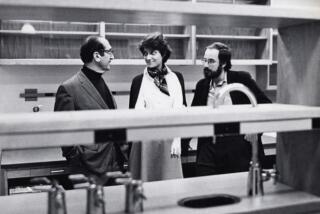Scholar Blames Patent Office for Distorting History : Women’s Inventions: Are They Ignored?
- Share via
BERKELEY — The contributions of women in science history have been grossly distorted in textbooks, and the U.S. Patent Office is largely to blame, a Stanford University historian contends.
Autumn Stanley, a scholar at Stanford’s Center for Research on Women, says three lists of women inventors prepared by the U.S. Patent Office at the request of feminists in 1890 were significantly inaccurate.
Stanley has not decided whether the omissions were unconscious oversights or deliberate exclusions.
“That’s up for question,” she said. “I think they took women’s work so much for granted that ignoring it was kind of unconscious, which is the worst kind of discrimination there is.”
She said the lists, which reported patents received by women from 1790 to July 1, 1888, ignored such significant discoveries as Martha Coston’s night-signaling devices, which revolutionized naval communication and are still in use today.
“How could Coston’s device have been forgotten? It was famous at the time the lists were compiled,” Stanley said. Patented in 1859, the night-signaling device was shown at the Philadelphia Centennial in 1876, at Paris in 1878 and at Chicago’s Columbian Exposition in 1893.
The lists also wrongly classified discoveries by women from technical categories to more traditional female fields, Stanley said. For example, Harriet Strong’s dam and reservoir system was listed with pots and pans in the culinary utensils category, she said.
Other inventions omitted were Henrietta H. Cole’s “Pony” fluting machine, Mary P. Carpenter’s self-threading and self-setting needle for sewing machines, and Geneva Armstrong’s improvement in livestock cars, she said.
Stanley has found that 33 out of 157 women who earned patents in 1876 were not mentioned on the list.
“This means that clerk-compilers omitted roughly one woman’s invention for every four they recorded,” she said. “The total number of women’s patents for 1876 should be almost 27% higher.”
The significance is not that the ratio of women patents is higher, she said. With the omissions added, women still only account for 1.3% of all patents during that period, she said.
The significance is that women have not been given credit for important mechanical discoveries, Stanley said.
“If this achievement in mechanical innovation is hidden, then the picture of women’s overall inventive achievement is distorted, as are the inferences drawn from it about women’s inventive capacity,” she said.
More to Read
Sign up for Essential California
The most important California stories and recommendations in your inbox every morning.
You may occasionally receive promotional content from the Los Angeles Times.











